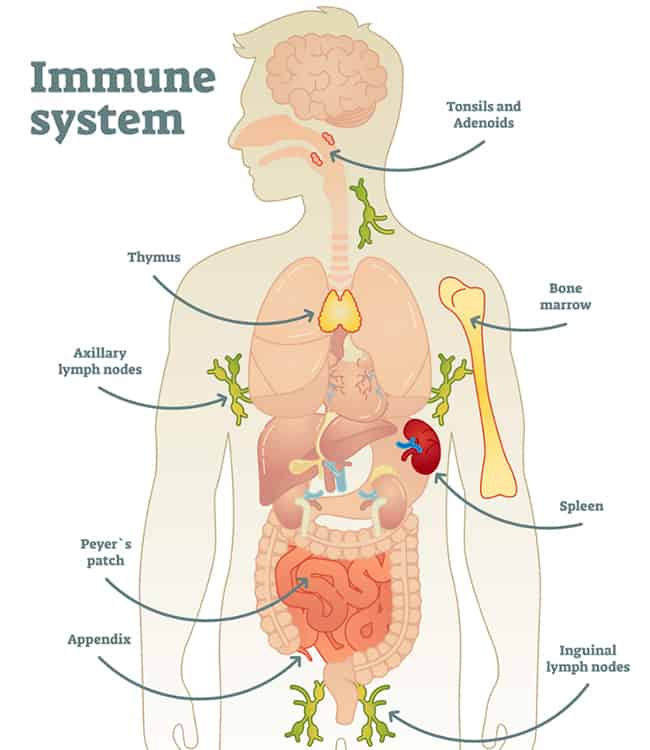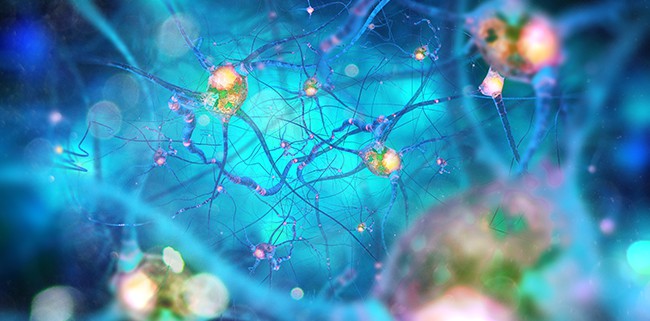Did you know that your central nervous system (CNS) and immune system talk together? It was once thought that these two super systems were not even linked together, but now we know they are not only linked but rely on each other to make sure your body works properly and stays healthy.
Given the current crisis we are facing with the COVID-19 virus, it is important that we understand how our amazing body works to defend ourselves during an immune response. We hear a lot in the media about doing all the important things to protect ourselves and others, like washing our hands, sneezing or coughing into our elbow or a tissue, and staying away from others if we are sick—these are all really important.
However, what is also important is a healthy immune system because that is our in-built defence against things like bacteria and viruses that can harm our bodies. Most people know that having a healthy immune system is important, but what many don’t know is that having a healthy nervous system is also important. That is because these two systems, the immune and nervous systems, talk and work together to look out for changes inside and outside our bodies and to launch an immune response when needed.

We have these groups of cells all around our body, called neuro-immune cell units, which are made up of nerve cells and immune cells, and they talk to each other through chemical messages.1
When they sense an invader in the body, like a virus, they release chemicals to start an immune response, and they send messages to tell the brain what is happening. A special part of the brain, called the Hypothalamus, then releases hormones to tell other parts of the brain to release more hormones.2-7
It is a case of one thing triggering another and eventually these two little glands that sit on top of our kidneys (adrenal glands) are told to release a hormone called cortisol. Cortisol acts by controlling the immune response so it is not too extreme.3 7 8 This is a case of wanting just enough immune response and not too much or it will cause other problems for the body.
The central nervous system and the immune system work together to defend the body from invading pathogens and tissue injury.
We also have another part of our nervous system, called the autonomic nervous system, that talks to the immune system. This part of your nervous system controls things that are automatic, that we don’t have to think about, like breathing or our heartbeat. Our immune system is also something that is automatic and there are nerves that go to all of our immune organs, like our spleen and tonsils.4 5 9-14
These nerves then talk to the immune cells through chemical messages and cause the release of other hormones which can then control and coordinate a healthy immune response.10-14
This automatic part of our nervous system also detects emotional stress, and this is how stress can interfere with our immune response. Cortisol, the hormone that controls the immune response, is also released under stress. Through these two pathways, emotional stress can alter the levels of the immune chemical messengers in the body and weaken our immune response.8 9 15-17

So, we can see that the central nervous system and the immune system talk to each other and work together to defend the body from invading pathogens and tissue injury.
So, how does this relate to chiropractic?
Check out the “Chiropractic and the Immune System: Summary Article” for what the research says specifically about chiropractic and its influence on the immune system. Not only does chiropractic affect the immune system, but there is also evidence that chiropractic definitely affects the nervous system.
We know now, from a lot of neuroscience research studies, that when your spine is not moving properly, this changes the way your brain can sense what is going on in and around your body and the way it controls your body.18-20 If the joints of your spine are not moving properly, what chiropractors call being subluxated, this may affect how well you can sense what is going on in and around you and how well you can react to your environment.
Research has shown that when a chiropractor then gently adjusts these subluxations, it helps the brain to more accurately ‘see’ what is going on in and around the body.21-24

Research has also shown that when a chiropractor adjusts these subluxations, it activates a part of our brain called the pre-frontal cortex.25
The pre-frontal cortex is like the conductor in an orchestra, the brain being the orchestra in this case. It regulates and controls many functions of the brain, some of which are directly linked to the immune system, including the autonomic nervous system and the hypothalamus and the related hormonal system.8 26 27
So, when you get adjusted by your chiropractor, it might help you to be able to respond and adapt to your environment better and allow your nervous system and your immune system to talk to each other clearly to keep you balanced and healthy.
References
- Godinho-Silva C, Cardoso F & Veiga-Fernandes H. Annual review of immunology 2019;37:19-46.
- I Am. So pleased you are. Reading this reference list 🙂
- Buckingham JC, et al. Pharmacology Biochemistry and Behavior 1996;54(1):285-98.
- Kawli T, He F & Tan M-W. Disease models & mechanisms 2010;3(11-12):721-31.
- Kipnis J. Scientific American 2018;319(2):28-35.
- Mulla A & Buckingham JC. Practice & Research Clinical Endocrinology & Metabolism 1999;13(4):503-21.
- Silverman MN, et al. Viral Immunol 2005;18(1):41-78.
- Leonard BE. Neuroimmunomodulation 2006;13(5-6):268-76.
- Aich P, Potter AA & Griebel PJ. Int J Gen Med 2009;2:19-32.
- Elenkov IJ, et al. Pharmacological reviews 2000;52(4):595-638.
- Felten SY, et al. In: Goldstein DS, Eisenhofer G, McCarty R, eds. Advances in Pharmacology: Academic Press 1997:583-87.
- Kohm AP, Sanders VM. Norepinephrine: a messenger from the brain to the immune system. Immunology today 2000;21(11):539-42.
- Nance DM, Sanders VM. Brain, Behavior, and Immunity 2007;21(6):736-45.
- Sanders VM, Kohm AP. International review of neurobiology 2002;52:17-41.
- Dorshkind K, Horseman ND. BioEssays 2001;23(3):288-94.
- Godbout JP, Glaser R. J Neuroimmune Pharma 2006;1(4):421-27.
- Herkenham M, Kigar SL. Prog Neuropsychopharmacol Biol Psychiatry 2017;79(Pt A):49-57.
- Uthaikhup S, et al. Arch Gerontol Geriatr 2012;55(3):667-72.
- Haavik H, Murphy B. J Electromyogr Kinesiol 2012;22(5):768-76.
- Treleaven J. Man Ther 2008;13(1):2-11.
- Daligadu J, et al. JMPT 2013;36(8):527-37.
- Haavik H, Murphy B. Journal of Electromyography and Kinesiology 2012;22(5):768-76.
- Haavik H, et al. JMPT. 2017 doi: 10.1016/j.jmpt.2016.10.002
- Taylor HH, Murphy B. JMPT. 2008;31(2):115-26.
- Lelic D, et al. Neural Plasticity 2016;2016:1-9.
- Diorio D, Viau V, Meaney M. The Journal of Neuroscience 1993;13(9):3839-47.
- Hänsel A, Von Känel R. BioPsychoSocial Medicine 2008;2(1):21.
Acknowledgments
- Dr. Heidi Haavik – BSc(Physiol) BSc(Chiro) PhD
- Dr. Kelly Holt – BSc, BSc(Chiro), PGDipHSc, PhD
- Dr. Jenna Duehr – BChiro, BHSC (Nursing), MHSc

